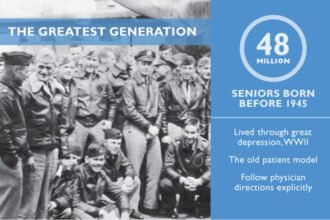The conundrum continued behind conference doors last week at the American Telemedicine Association (ATA) conference in Tampa about the efficacy of mobile phone usage to improve patient health.
The conundrum continued behind conference doors last week at the American Telemedicine Association (ATA) conference in Tampa about the efficacy of mobile phone usage to improve patient health.
Lively discussions followed about the ROI for chronic disease management through mobile health and outcomes for remote patient monitoring focusing on whether telemedicine is excluded from meaningful use and reasons why telehealth should be a key component in Accountable Care Organizations (ACO).
As the debate continued, Faye Bryant, browsed Tampa’s mega convention center conference actively shopping for solutions for her patients.
Faye Bryant, BSN, RN, C, is the Clinical Services Administrator for the Telehealth Division at Acadian Telehealth Monitoring, in Lafayette, LA, and she knows what her patients need.
Bryant’s purpose for attending the ATA was to “look at new technology that will help the elderly stay at home and to maintain a healthy lifestyle,” and most importantly to “remain independent in their homes,” she said.
“Telehealth monitoring allows patients to maintain that independence, but be safe at the same time,” she added.
Bryant is on a mission to keep her patients safe and she is searching for telehealth solutions to do just that.
Aware that patient-centric care is the nucleus of telemedicine/telehealth, Bryant’s patients use telehealth monitoring devices. “The in home remote monitoring allows for the patient to take a more active role in their health. It allows them to see how certain behaviors can have an immediate impact on their disease state. This impact can be either positive or negative so it works as a reward system as well as a way to prevent exacerbations.”
Bryant’s patients can input their health and biometric data from consumer monitoring devices that measure blood sugar, weight, and blood pressure (to name a few) into smartphones or PCs; which then safely integrates into the electronic health record (EHR, PHR, EMR) for instant communication and feedback from physicians and other health care providers.
U.S. Department of Health and Human Services – Health Resources and Services Administration (HRSA) define Telehealth:
“Telehealth is the use of electronic information and telecommunications technologies to support long-distance clinical health care, patient and professional health-related education, public health and health administration. Technologies include videoconferencing, the internet, store-and-forward imaging, streaming media, and terrestrial and wireless communications.”
Convinced which telehealth solutions are right for Bryant’s patients, she actively searches through the mountainous array of information for solutions to help detect falls.
She methodically sorted through the selection of watches.
Not any watch, although stylish, these watches aren’t used to keep you on track with time; instead its purpose is to help keep patients safe. The watches can help detect falls. “So if a patient falls, we can be notified and get the patient help,” Bryant said.
Falls with the elderly are a massive problem, and there’s a huge need to help protect the elderly from falls and detect them early if they do occur.
“Falls are the leading cause of injury among adults aged 65 years and older in the United States, and can result in severe injuries such as hip fractures and head traumas. Many older adults, even if they have not suffered a fall, become afraid of falling and restrict their activity, which drastically decreases their quality of life. As the U.S. population ages, both the number of falls and the costs to treat fall injuries are likely to increase. In 2000, falls among older adults cost the U.S. health care system over $19 billion, or $23.6 billion in 2005 dollars.”
Bryant explains that some of the “fall detection devices will actually notify you if there is no movement for a set time or if there is a dramatic drop, so it’s more of an instant response; so when a change in location is noted it will be sent to the server.”
“It’s amazing how technology has evolved, and as nurses we have that feeling that no one can take care of our patients just as good as we can, so we’re kind of slow to let go.”
Telehealth can improve patient outcomes, “where you can see a reduction in re-hospitalizations up to forty percent in some instances, it’s proven it works, so we just need to accept it,” said Bryant.
And, accept it she has; a very determined and savvy thinker she has embraced the brilliant technology and utilizes it to keep her patients safe.
So while the discussions continue about the quality, efficiency and costs of telehealth, there’s one nurse in Layfette, LA who knows what is needed to keep her patients safe.
Your turn
We would love to hear your insightful thoughts and comments. Are you a patient that uses telehealth monitoring? Has it improved your health care and communication with your physician and other clinical health care providers? Are you a health care provider that engages in telehealth? Please share your story with us.
As always, thank you for your valuable time.
Helpful Resources
U.S. Department of Health and Human Services – Health Resources and Services Administration (HRSA)
American Telemedicine Association







